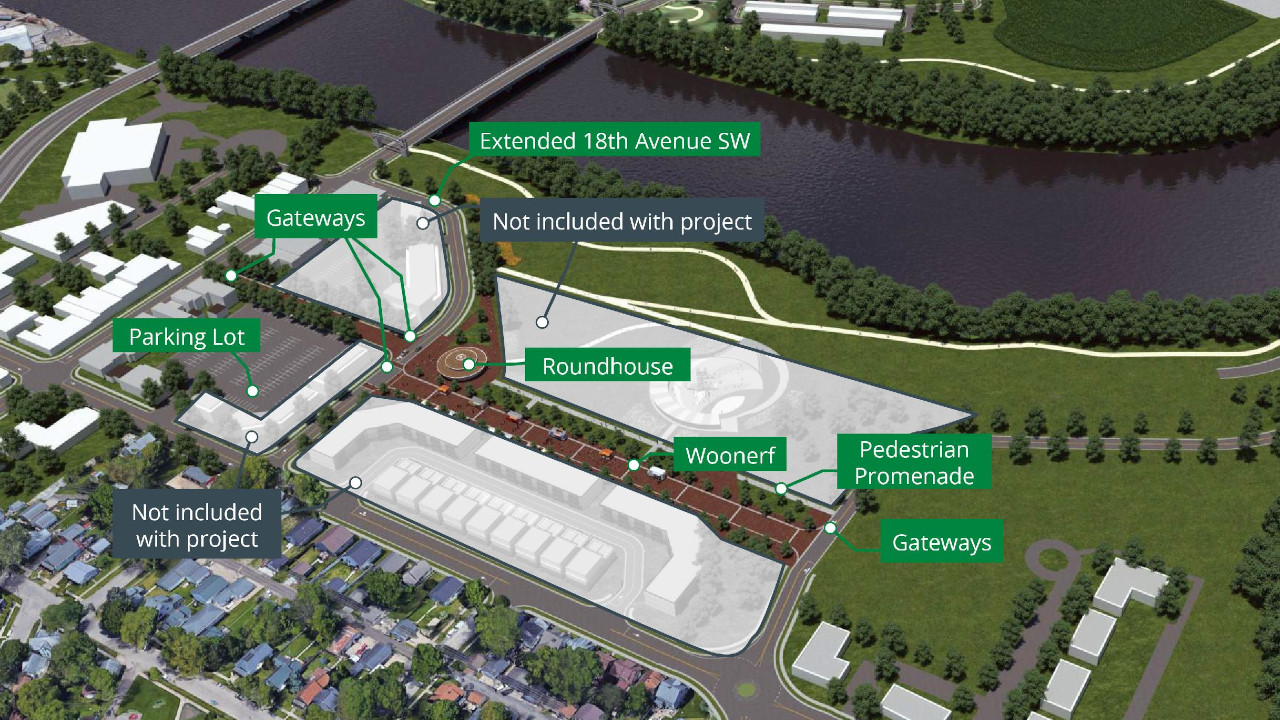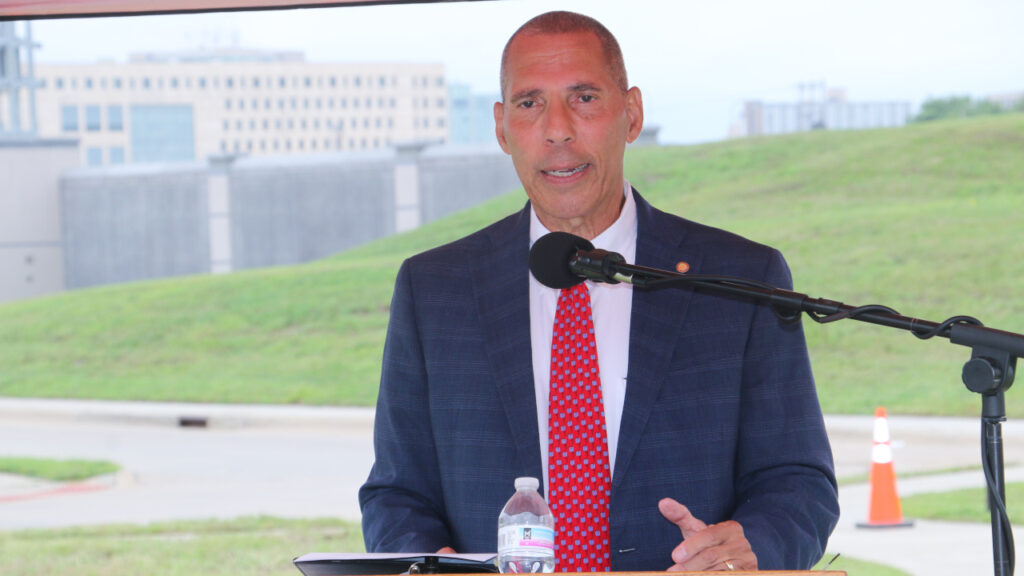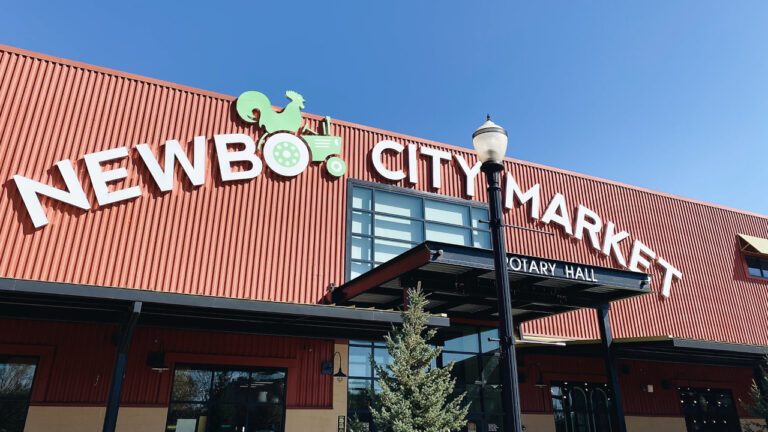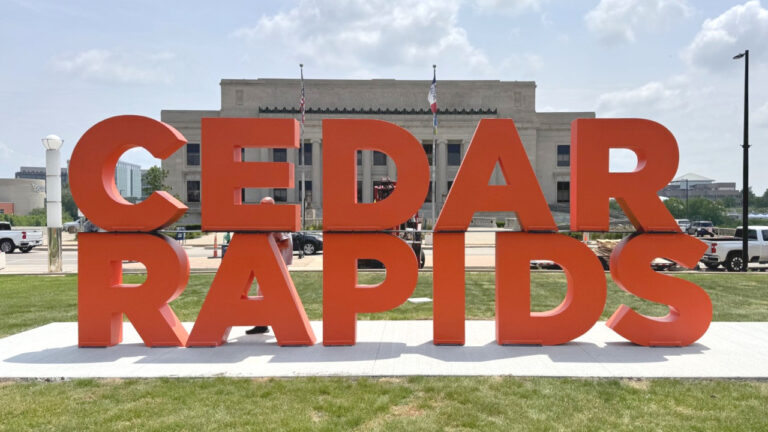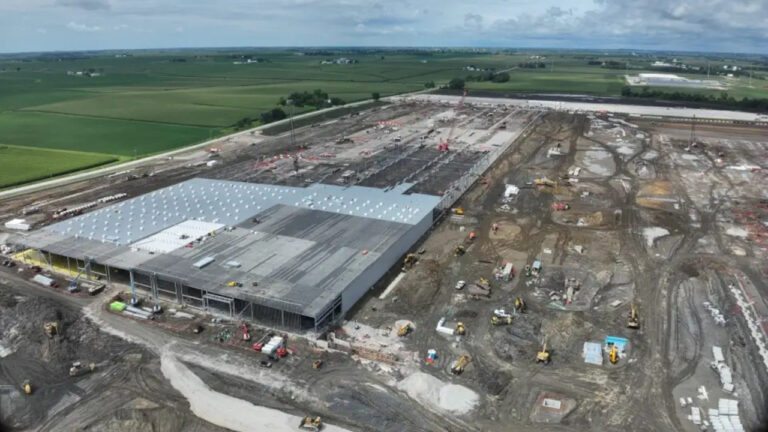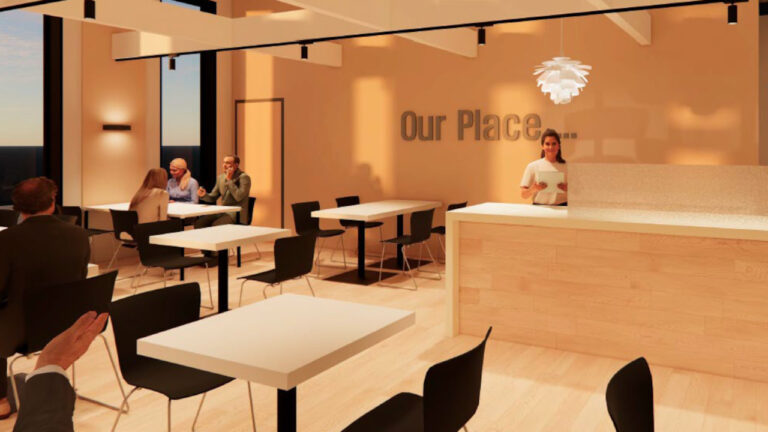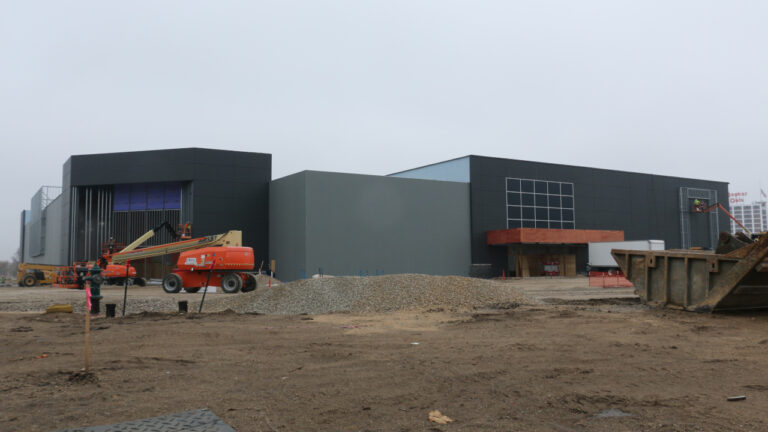Cedar Rapids City Council member Dale Todd borrowed a trope from a classic Disney movie to celebrate the groundbreaking ceremony Tuesday morning for the city’s new roundhouse and LightLine Loop project.
“The circle of life was once broken,” Mr. Todd said, referencing “The Lion King” theme’s representation of interconnectedness. “But now it’s restored.”
The reference was to the flood of 2008, which devastated the historic Riverside Roundhouse in Czech Village. Built in 1963, the roundhouse hosted farmer’s markets and other events for years before being dismantled in 2010.
The LightLine Loop, named to coincide with the nearby LightLine Bridge project nearby, is a $13.8 million project scheduled for completion in the summer of 2026. A $3 million Destination Iowa grant is helping to fund the project, along with TIF bonds issued by the city.
Along with a new version of the Roundhouse, a multipurpose enclosed event space, the project also incorporates a configurable festival street dubbed a “Woonerf” (Dutch for “street for living”), a lengthy pedestrian promenade, an extended 18th Avenue SW connecting to A Street SW, a series of gateway monuments, a mix of permanent and removable bollards that can be used to close streets in the area for festivals or other public events, a new parking lot that will expand the area’s off-street parking capacity by more than 100 spaces, and connections to existing recreational trails in the area.
Several speakers at Tuesday’s groundbreaking heralded the project’s connection to the past, including the Czech immigrants who lived and worked in the area.
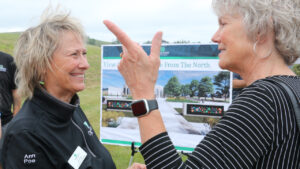
Cedar Rapids Mayor Tiffany O’Donnell called out those who have “shared their passion” for the project since it was first proposed as part of the Czech Village/NewBo Action Plan, which was adopted by the City Council in 2019.
“There were quite a few of those, and that is why this project is as terrific and truly collaborative as it is today,” Ms. O’Donnell said. “From the workers at the factories, to the storefronts and the people who lived and built these neighborhoods, to the trails and the gathering spaces that we see now, and the future streets and businesses that will unite them in this location, the LightLine Loop is a real investment in our future, and it’s rooted in our history and our traditions.”
Mr. Todd, whose council district encompasses the LightLine Loop project area, shared his memories of learning about the Roundhouse area, and the Czech Village neighborhood as a whole, as a newly-elected parks commissioner in 1998.
“Quite often we refer to (this area) as the place where the river bends,” he said. “This is where the river bended, and it was the home to many of the Czech immigrants who lived here in Stumptown. And in the morning, they crossed the CRANDIC bridge, now the LightLine bridge, to go to work at the Sinclair packing house. And at night, they come home to their houses, and on Saturday, they’d get their vegetables and fruit at the farmers market, and on Sunday, they’d go to church at St. Wenceslaus St. Ludmila’s. This project is somewhat of an honor to their memory and to their hard work.”
He also referenced the significant scope of city’s post-flood investments.
“The enormity of what we have done is nothing short of transformative,” he said. “There’s not many cities in America who have achieved what we have. I can start with Shaver Road, or McLeod Run, the lake, Quaker Oats flood wall, the parks on both sides of the river, the downtown flood wall, the skate park, Mount Trashmore, the LightLine bridge, Prairie Park Fishery. Each one of these projects matter, but when you connect them together, they actually form the largest capital improvement project for any city in the history of Iowa.”
For comparison, he cited the Iowa Events Center at $217 million, the University of Iowa Children’s Hospital at $357 million, the Dubuque Bee Branch watershed project at $250 million and Hancher Auditorium at $176 million.
“Add those projects all together, and they still pale in comparison to what this city is doing,” he said.
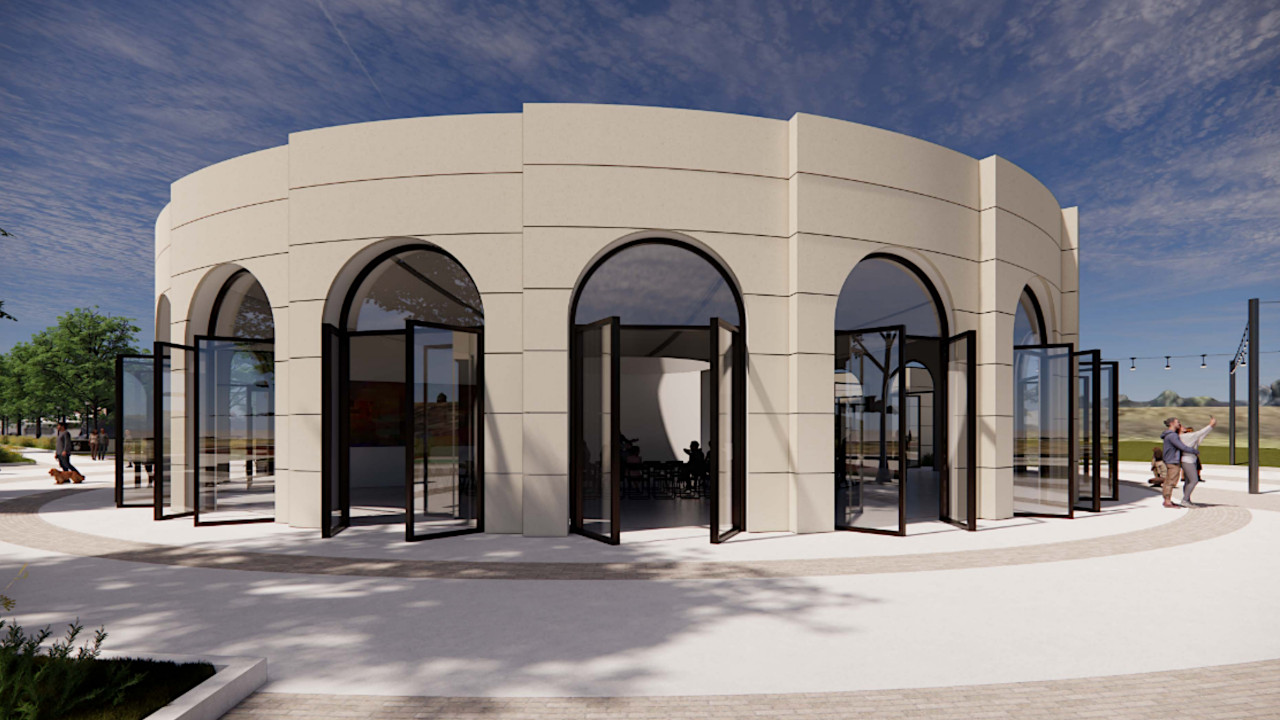
Cedar Rapids city manager Jeff Pomeranz said the LightLine Loop project has been propelled by community spirit and cooperation as much as it has by government leaders. He also noted that the $3 million Destination Iowa grant was originally awarded at just over $1 million, not enough to see the project to completion.
“I turned to the mayor and said, ‘I know that you can help with this,’” Mr. Pomeranz said. “‘I know you can talk to (Iowa Economic Development Authority director) Debi (Durham). I know you can help push this project forward, and most importantly, just give her that understanding of this really interesting, important, unique amenity for our city. And it wasn’t too long thereafter that the mayor did get a phone call from Debi that said we were able to make the project happen with the $3 million that was requested. So relationships do matter, and we have been successful, as Dale has mentioned in Cedar Rapids, on our own, as well as with the help of many others. But it does take those relationships to support what we’re trying to accomplish … We believe that this LightLine loop will draw visitors to our riverfront, our trails, our bridges and gathering spaces, and strengthen our local businesses and our local community as a whole.”
Carrie Mardorf, the city’s new parks and recreation director, also spoke at the groundbreaking.
“These new spaces will expand access to recreation, provide venues for community events and create opportunities for people to connect, whether it be families at festivals, friends enjoying a concert or visitors discovering our local culture,” Ms. Mardorf said. “We design our spaces for accessibility so everyone can take part, and we build them to last so they can benefit our community for generations. I want to thank everyone who shared ideas, gave feedback and supported this work. You are as much a part of this project as the bricks and mortar we are putting in place.”
